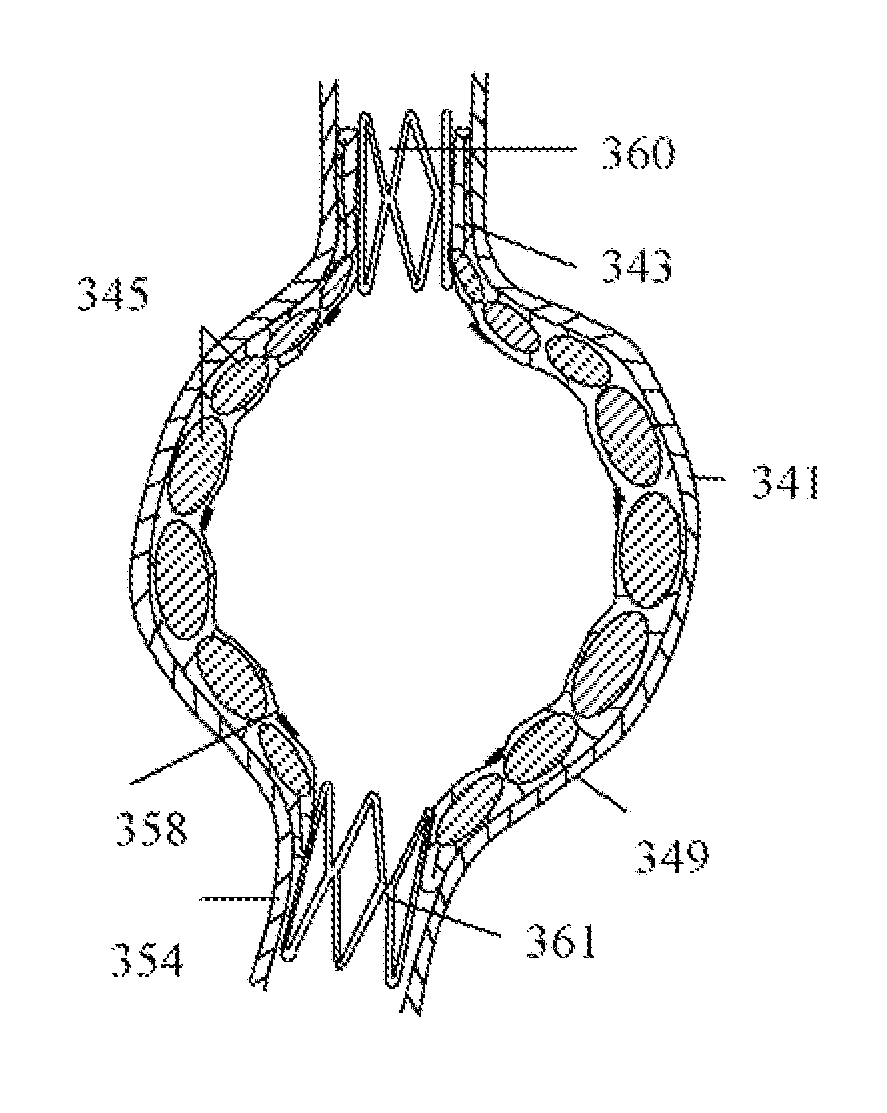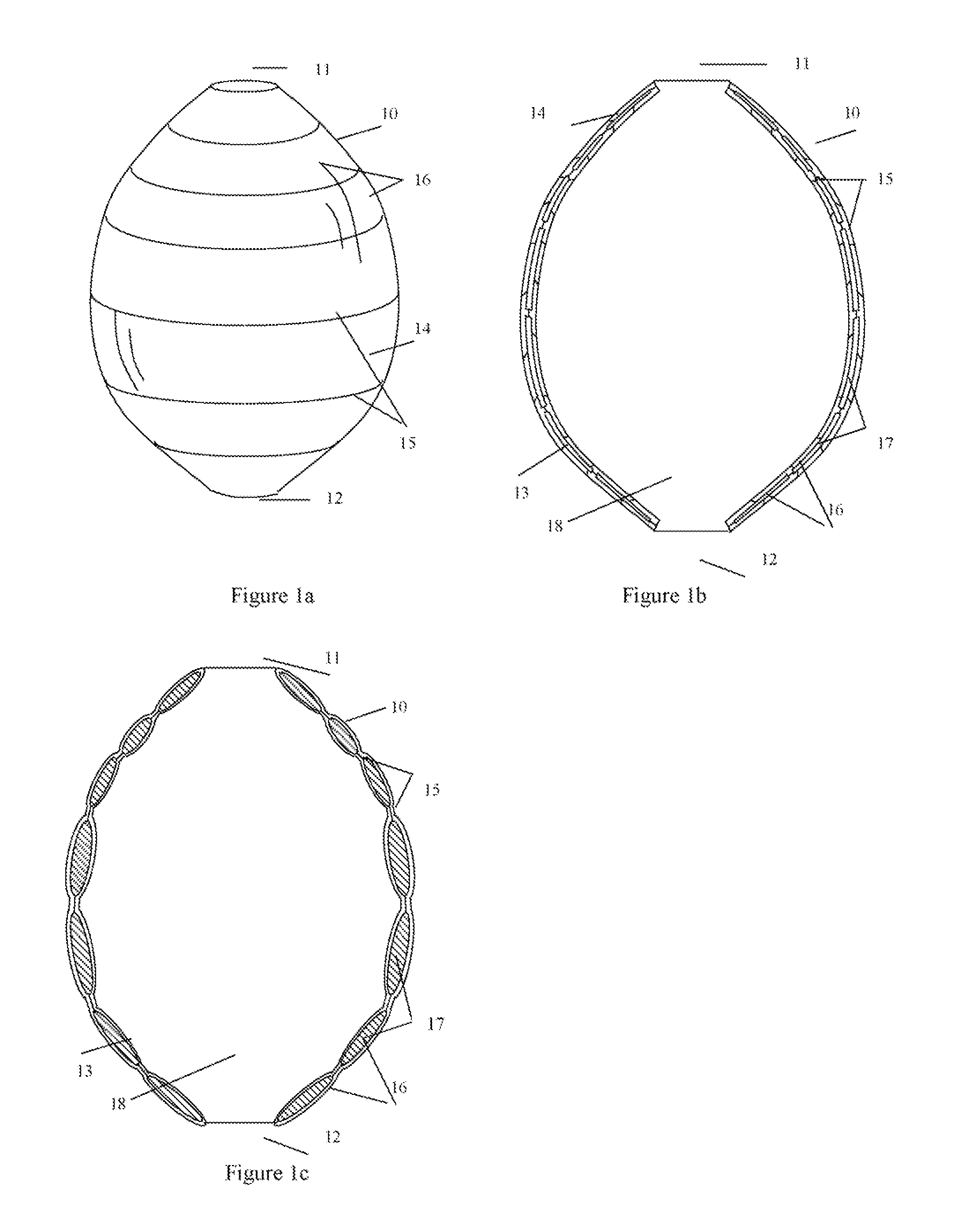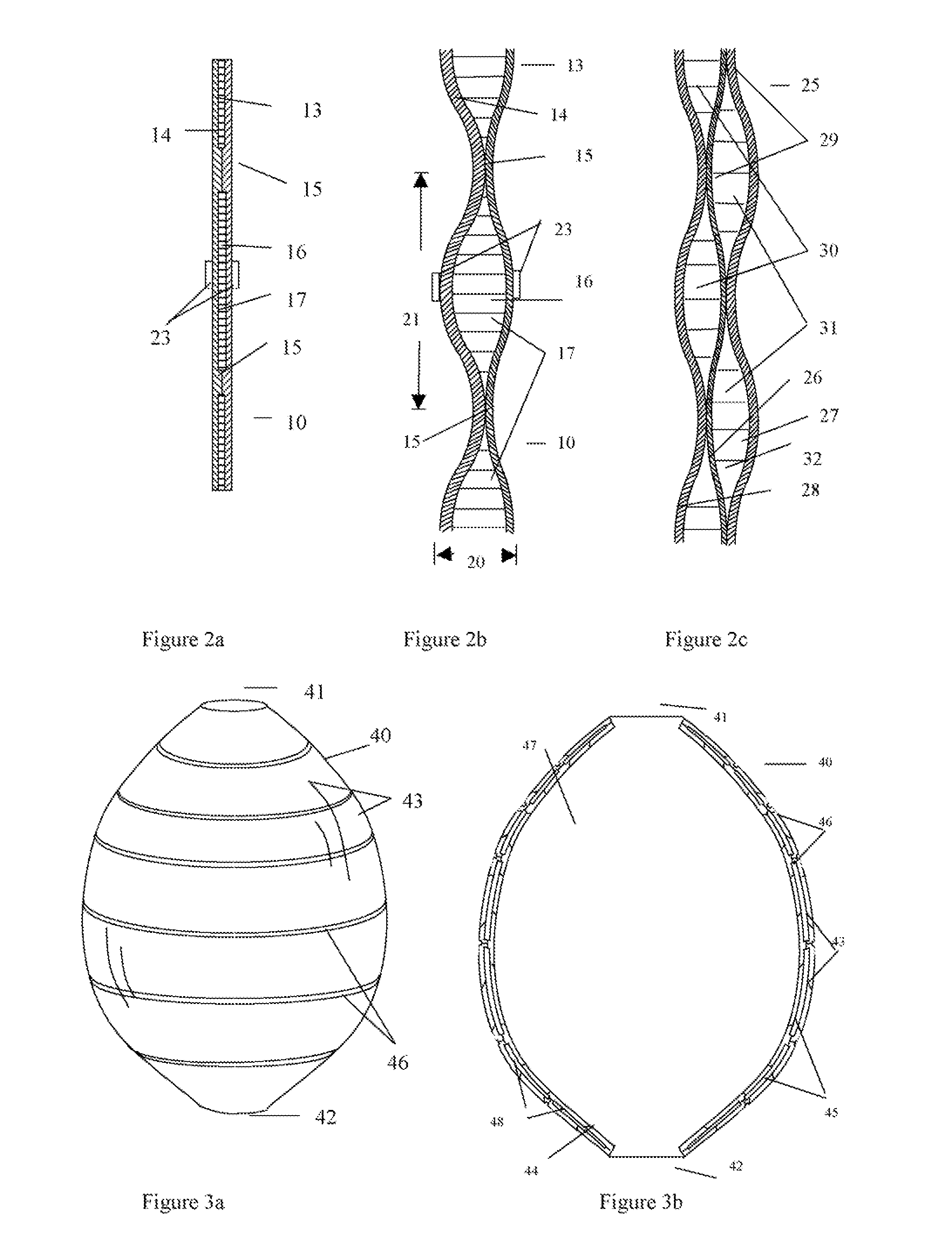Inflatable devices and methods to protect aneurysmal wall
a technology of aneurysmal wall and inflatable device, which is applied in the field of inflatable device and method to protect aneurysmal wall, can solve the problems of unsuitable for all patients, risky procedure, and estimated 32,000 deaths resulting from aneurysmal rupture, so as to improve the surface area, improve the healing effect, and reverse the pathology
- Summary
- Abstract
- Description
- Claims
- Application Information
AI Technical Summary
Benefits of technology
Problems solved by technology
Method used
Image
Examples
Embodiment Construction
[0054]Embodiments according to the present invention provide inflatable liner and methods useful for protecting aneurysm and reducing the risk of implantable medical device post-implantation migration and endoleak. More specifically, the inflatable liner and methods provide protection to blood vessel against rupture especially at the aneurysm site. The inflatable liner also has the advantage of no kinking, minimizing post-implantation device migration and endoleak following liner deployment at an aneurismal site.
[0055]For convenience, the devices, compositions and related methods according to the present invention discussed herein will be exemplified by using inflatable multiple walls liner intended to treat abdominal aorta aneurysms or Thoracic aortic aneurysms. However, aneurysms at other locations of the body can be treated with the same devices or methods.
[0056]The present invention addresses the issues with current therapies by providing methods and systems to reduce the likeli...
PUM
 Login to View More
Login to View More Abstract
Description
Claims
Application Information
 Login to View More
Login to View More - R&D
- Intellectual Property
- Life Sciences
- Materials
- Tech Scout
- Unparalleled Data Quality
- Higher Quality Content
- 60% Fewer Hallucinations
Browse by: Latest US Patents, China's latest patents, Technical Efficacy Thesaurus, Application Domain, Technology Topic, Popular Technical Reports.
© 2025 PatSnap. All rights reserved.Legal|Privacy policy|Modern Slavery Act Transparency Statement|Sitemap|About US| Contact US: help@patsnap.com



